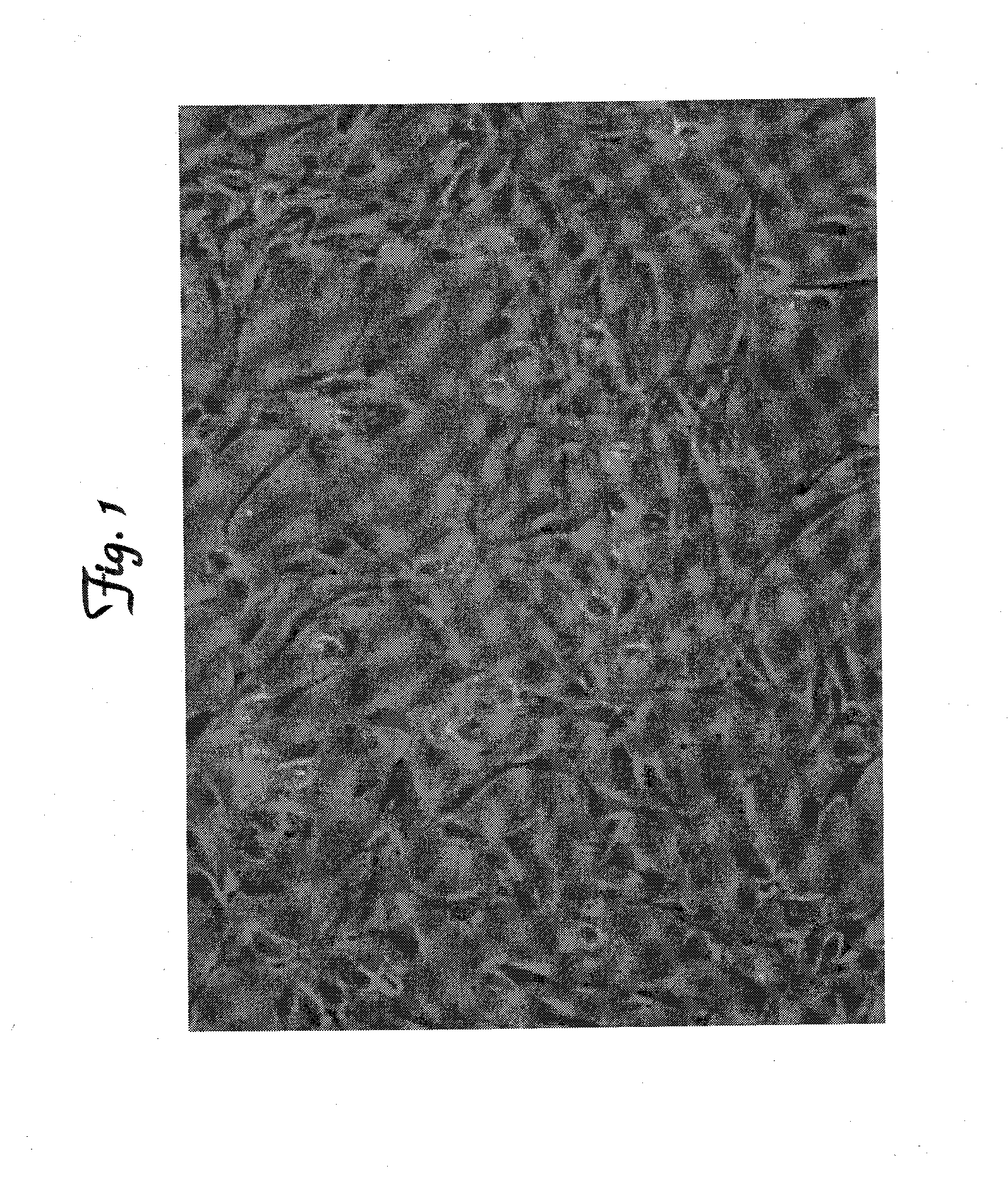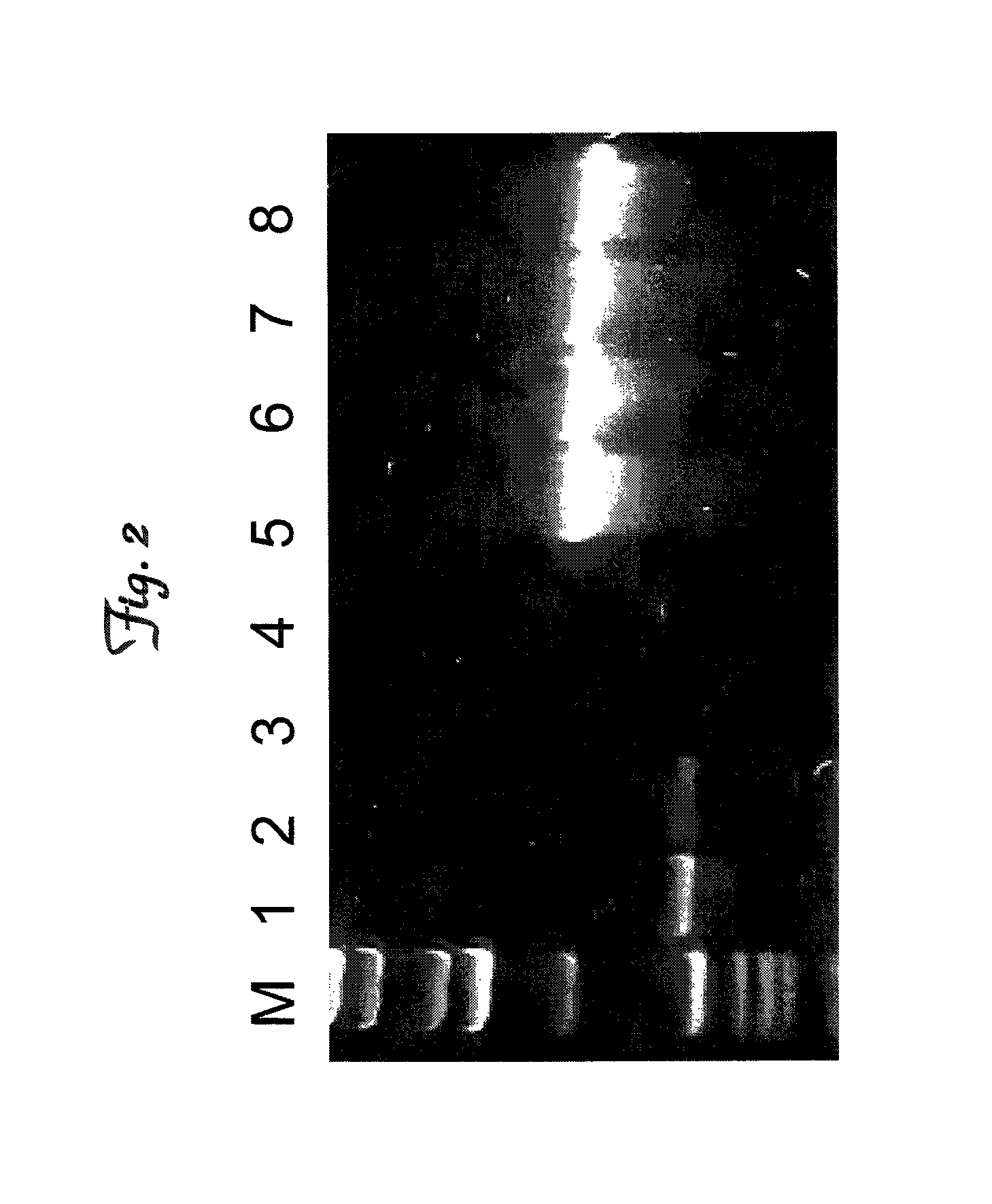Use of umbilical cord blood stem cells to treat ischemic event
a technology of umbilical cord blood stem cells and ischemic events, which is applied in the direction of artificial cell constructs, biocide, drug compositions, etc., can solve the problems of ischemic cell damage following rapid, unable to adequately replenish, and consuming cellular atp, etc., to achieve the effect of easing neurological deficits
- Summary
- Abstract
- Description
- Claims
- Application Information
AI Technical Summary
Benefits of technology
Problems solved by technology
Method used
Image
Examples
example 1
Isolation of a Novel of Human Umbilical Cord Stem Cells
[0079]Human umbilical cord blood (UCB) was collected after labor and delivery and placed into a blood bank pack unit (Baxter) that contained 35 ml of CPD (921 mg sodium citrate, 893 mg dextrose, 105 mg citric acid, 78 mg mono basic sodium phosphate). UCB samples were kept at room temperature and processed within 4 hours after harvesting. UCB was diluted 1:4 in phosphate-buffered saline (PBS) with 0.5% BSA. Mononuclear cells (MNCs) were separated by centrifugation (500 g, 30 minutes) in a Ficoll-Hypaque gradient (density 1.077 g / cm3), suspended in PBS with 0.5% BSA and washed twice. 10×106 MNCs were plated in T25 cell culture flasks in 7 ml culture medium (DMEM / F12 (Invitrogen), 1×N2 serum-free supplement (Invitrogen), with 10% FBS (Invitrogen), 20 ng / ml b-FGF (R&D Systems), 20 ng / ml EGF (R&D Systems), 100 U penicillin (Invitrogen), and 1000 U streptomycin (Invitrogen)). About 15 to 18 days later, when adherent cells were more th...
example 2
Expression of Oct-4 Transcription Factor by Isolated Human Umbilical Cord Blood Stem Cells
[0080]Oct-4 (also known as Oct-3 / 4) is a key transcription factor that is typically expressed by multipotent stem cells. At the present time Oct-4 expression by umbilical cord cells has not been reported in the scientific literature. To determine whether the cells isolated from cord blood express this stem cell transcription factor, mRNA was isolated from 5×106 cord blood stem cells (CBSCs). The mRNA was reverse transcribed and cDNA was amplified as follows: 95° C., 15 min., 35 cycles (94° C., 45 sec., 56° C., 45 sec., 72° C., 1 min.), followed by 72° C., 10 min. Primers used for Oct-4 (primers were designed using the “Oct-4” gene sequence as listed in GenBank accession number AJ297527) were (GACCAGTTCTGATGACTC (SEQ ID NO:1); GTAGGTGGTGTATTTCTG (SEQ ID NO:2)) and for G3PDH were (TGAAGGTCGGAGTCAACGGATTTGGT (SEQ ID NO:3); CATGTGGGCCATGAGGTCCACCAC (SEQ ID NO:4)). G3PDH was used as a housekeeping g...
example 3
Cell Surface Markers of Umbilical Cord Blood Stem Cells
[0082]To determine the cell surface markers expressed by UCBSCs, single cell suspensions of UCBSCs were incubated for 20 min. at 4° C. with the following antibodies purchased from BD Bioscience: CD34, CD45, CD90, CD13, CD44, CD49, CD10, Class I, Class II DR, and isotope controls. One hundred thousand events were acquired and analyzed in a flow cytometer (Becton Dickinson) using the CELLQUEST software. The UCBSCs were positive for CD13, CD44, CD90, CD49, CD10, and MHC Class I cell surface molecules (FIG. 3). In contrast, the UCBSCs did not express CD34, CD45, and MHC Class II molecules (FIG. 3). This cell surface profile is distinct from cells classified as hematopoietic stem cells (HSCs) and multipotent adult stem cells (MAPCs).
PUM
| Property | Measurement | Unit |
|---|---|---|
| density | aaaaa | aaaaa |
| distance | aaaaa | aaaaa |
| time | aaaaa | aaaaa |
Abstract
Description
Claims
Application Information
 Login to View More
Login to View More - R&D
- Intellectual Property
- Life Sciences
- Materials
- Tech Scout
- Unparalleled Data Quality
- Higher Quality Content
- 60% Fewer Hallucinations
Browse by: Latest US Patents, China's latest patents, Technical Efficacy Thesaurus, Application Domain, Technology Topic, Popular Technical Reports.
© 2025 PatSnap. All rights reserved.Legal|Privacy policy|Modern Slavery Act Transparency Statement|Sitemap|About US| Contact US: help@patsnap.com



